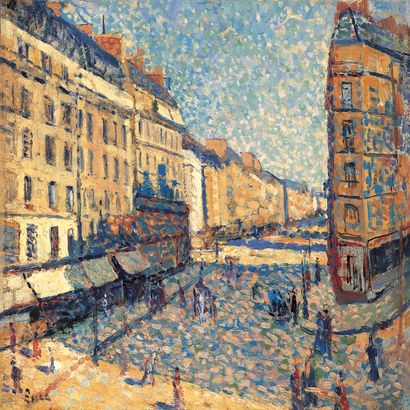Maximilien Luce : Peintre Engagé et Néo-Impressionniste
Maximilien Luce, born in 1858, was a committed French painter sensitive to working-class conditions. After an apprenticeship with a wood engraver at the age of 14, he became a worker-engraver, attending the Académie Suisse and Carolus-Duran's studio.
In 1887, he joined the Neo-Impressionists, adopting tonal division and chromatic harmonies. Moving towards a freer use of color from 1897, Luce shared his friends' anarchist convictions, which led to his imprisonment after the 1894 assassination attempt.
A painter of work and history, he produced a series on the Pays Noir, depicting the industrial world without sentimentality. His paintings capture the dignity of the workers, while his denunciation of social injustice shines through in his illustrations for anarchist magazines.
In 1917, discovering Rolleboise, Luce found peace, practicing a more serene art and returning to the themes of Impressionism. In 2010, the Musée des impressionnismes Giverny devoted a retrospective to Luce.
What is the value of a Maximilien Luce painting?
The value of Maximilien Luce's works ranges from 1,000 to 200,000 euros, while his drawings and watercolors are of limited interest to collectors.
To appraise a work by Maximilien Luce, request a free estimate via our online form. Our team of experts and auctioneers will provide you with an independent view of the market price and advice for an auction sale.


